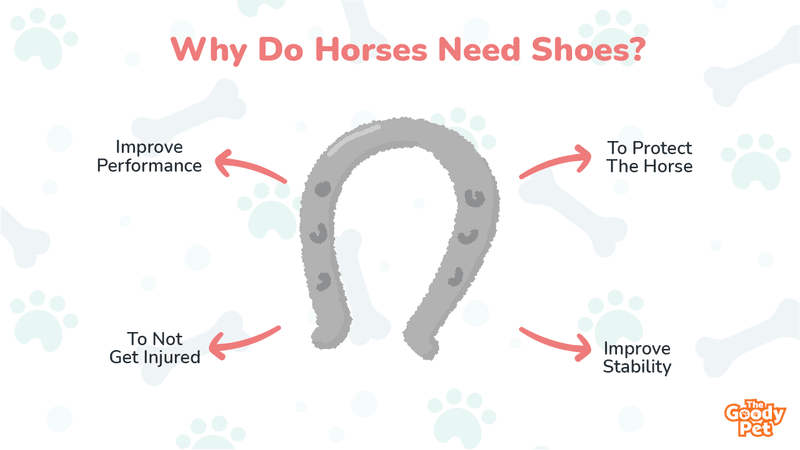One major decision horse owners are faced with, is whether or not to wear shoes for their horses; Frankly speaking, there are merits to both leaving a horse shod or barefoot, and this is what today’s article aims to examine.
Now, why will a horse need shoes? Horses may need shoes to correct an issue with the hoof or to protect the hooves from wear and tear due to overexposure to rough surfaces. Additionally, horses that will be regularly engaged in equine sports may wear shoes to improve stability and optimize performance.
This article contains info that will help you make a decision on whether or not to leave your horse barefoot, along with tips on what to do, if your horse keeps losing its shoes. But, before we proceed, let’s take a look at what may happen if you choose not to wear shoes on your horse.
What Happens If You Don’t Put Shoes On A Horse?
What Is A Horseshoe Made Of?
Horseshoes are typically U-shaped bars crafted from metals such as steel, aluminum, and copper. In the same vein, it isn’t unusual to come across shoes made wholly or partly from rubber or synthetic materials such as plastic and composites.
How Are Shoes Worn On Horses?
Fixing of horseshoes is usually carried out by a professional farrier, and it is done by driving nails into the hooves to hold the shoes.
What Can Possibly Happen If You Choose Not To Put Shoes On A Horse?
Leaving a horse unshod, particularly for those that live where the soil condition is unfavorable or are to be used for work, places the horse at a higher risk of wearing its hooves down, thereby resulting in weak, unhealthy hooves.
Additionally, leaving a horse that is fresh out of surgery or is receiving treatment for a foot injury, a hoof or muscular condition, barefoot may instead delay, and subsequently, sabotage the recovery process.
Do Horseshoes Hurt Horses?
The bottom part of the hooves, where shoes are fixed, contain no nerves, hence wearing horseshoes for a horse is a typically pain-free process if done properly, and by a professional farrier.
However, shoeing can be quite painful for a horse if it has previous bruises from walking barefoot, the shoe nail is driven too deep into the hoof or if the farrier is trying to force-fit a shoe.
Do All Horses Need Shoes?
The debate on whether or not to wear shoes for a horse is one that has been around for a long time, and frankly speaking, it doesn’t seem to be going away anytime soon!
Proponents of raising barefoot horses argue that leaving a horse unshod encourages the development of stronger and healthier hooves. On the other hand, those in support of shoes commonly claim that horseshoes help improve and optimise a horse’s physical performances.
However, the correct answer to the question of whether or not horses need shoes lies somewhere in-between; And there are instances where a horse may need to rock shoes, while in other situations, horses will do just fine going unshod.
When Are Horseshoes Necessary?
Horses that need shoes include those that’ll be regularly used for work activities and in equine sports. Shoes help relieve pressure on the horse’s hooves during tasks, and they also provide a certain degree of stability during sporting performances.
In the same vein, shoes are required for horses that have poor hoof conformation or injuries, and on those that will be regularly exposed to rough, non-uniform surfaces.
When Are Horseshoes Not Necessary?
You may not wear not need to wear shoes for your horse if there are no plans to use such a horse for work or sporting activities. Also, a horse that lives on soft land and pastures will usually do okay being unshod.
Horses with otherwise healthy hooves and proper hoof conformation may not need to wear shoes throughout their lives; However, such horses should receive regular hoof trimming to keep their feet in shape.
Why Do Wild Horses Not Need Shoes?
The first and foremost reason that wild horses can live without shoes is that, unlike their domesticated counterparts, they’re not subjected to physical activities that may put pressure on, and reduce the quality of the hoof.
Additionally, wild horses tend to travel over great distances, and over time, their hooves become hard and conditioned to deal with a wide variety of surfaces. Also, constant traveling helps to wear down and trim a wild horse’s hooves, but it isn’t unusual to hear of wild herds being caught and confined to trim their hooves.
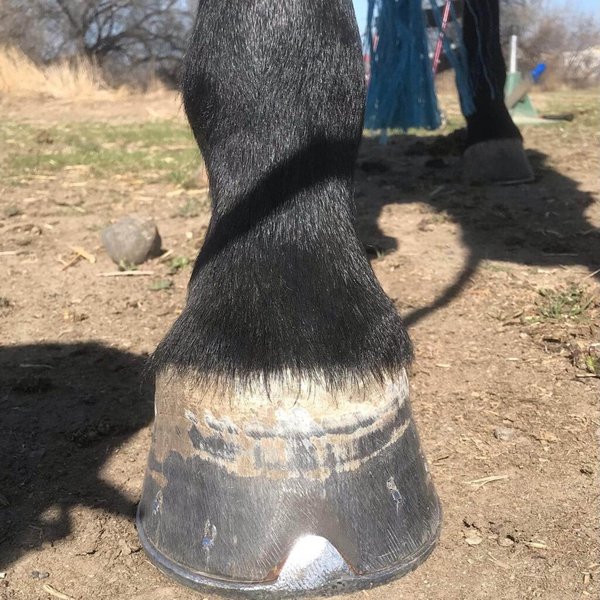
How Do You Know If A Horse Needs Shoes?
Observe The Condition Of The Hoof
It may be necessary to embrace the use of shoes for your horse, if you notice one or more problems with its hoof anatomy. Horses with relatively small hooves – when compared with the size of their bodies – and those with toes that grow faster than their heels are prime candidates for shoes.
Nature Of Physical Activities
If you plan on using a horse for exerting physical activities such as running on rocky surfaces, athletic exercises or roadwork, then it’ll be best for the horse to wear a shoe. Leading a horse to run on gravel or pavements without shoes may wear down and bruise the hooves and soles.
Physical disintegration of a horse’s hooves, which is typically caused by regular contact with rough surfaces can also be prevented or corrected by using shoes.
Watch For Physical Discomfort
It can be helpful to fix shoes on your horse if it is in pain from either bruised or damaged hooves or soles. Frequent weight shifting while standing, cautious walking and mild lameness while walking on rocky ground are all signs that your horse is in discomfort, and a shoe can help alleviate some of this discomfort.
Treatment Of Injuries
Bone and muscular problems such as horse laminitis, contracted heels, sand cracks and sole bruises can be corrected by the use of either corrective or therapeutic shoeing. Shoes help to elevate the tender, injured portion of your horse’s hooves away ground level, thereby providing relief and making the healing process faster.
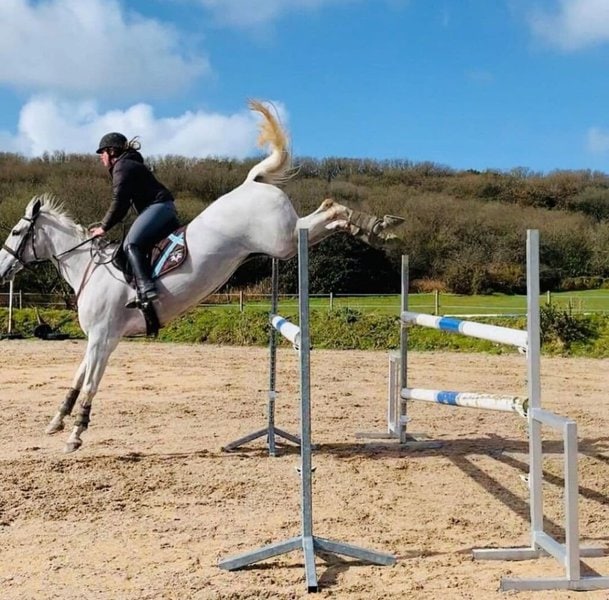
Why Does My Horse Keep Losing Shoes?
Failure To Change The Horseshoe When Due
Horse hooves grow at a fast pace, and these overgrown hooves tend to knock off horseshoes, if provisions aren’t made to either trim the hooves or replace the shoes on time.
Problems With The Hoof
If your horse’s shoes can’t seem to stay on, then it may be that you’re dealing with a horse that’s suffering from a hoof conformation problem. Additionally, if your horse has a brittle hoof wall, its hoof won’t be able to provide the necessary support for shoe nails, which results in the horseshoe falling off.
Other hoof conditions that may cause a horse to frequently lose shoes include cracks, abscesses, and laminitis.
Overstriding
Overstriding occurs when a horse’s hind feet makes contact with its forelegs while running, and this usually results in the horse either knocking off its shoes in the process or even injuring itself!
Problems of overstriding are common among young horses that haven’t perfected their movement patterns. And a horse can also overreach due to sudden changes in ground level or hoof conformation issues.
Unfavourable Weather And Environmental Conditions
Another reason your horse may have been losing its shoes is due to the moist, and sometimes, muddy state of the ground during the rainy season and winter. Frequent exposure to moisture causes a horse’s hoof to become soft and spongy, thereby resulting in the horseshoe losing its grip, and eventually falling off.
Also, horses are usually bothered by flies, especially during the hot months. And frequent stomping of the leg in an attempt to drive these flies away will loosen the horseshoe over time, and eventually cause it to fall off.
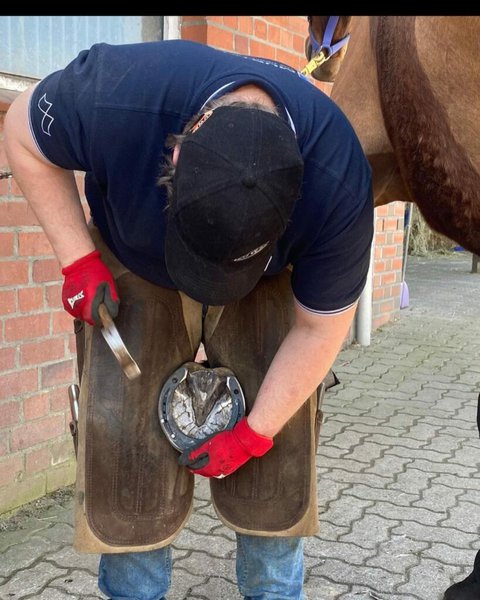
How To Stop Your Horse From Losing Its Shoes?
Regularly Change The Shoes
You don’t have to wait till your horse’s shoes are visibly showing signs of falling off, before you make an attempt to change them. Horse hooves grow at a fast pace, and it is recommended that you trim the hooves and replace the horseshoes at intervals of four to six weeks.
Use Overreach Boots
One way of stopping your horse from pulling its shoes off, is by wearing rubber overreach boots on the horse’s forelegs. Overreach boots are intended to prevent removal of the shoes that typically occur when the hind toes catch the shoes on the forelegs, when a horse is in stride.
And in addition to keeping the horseshoes on, overreach boots help prevent hoof injuries that may occur as a result of the hind and forelegs coming in contact with each other.
Proper Hoof Maintenance
A poorly groomed hoof may develop cracks, bruises and abscesses, which may in turn, result in the horseshoe losing its fit and falling off. To keep your horse’s hooves in optimal condition, you should take the time out to regularly pick out the feet to get rid of dirt, manure or any other form of debris.
Horses suffering from hoof cracks and splits can be rehabilitated with a quality hoof conditioner, and a product I’ll recommend you use, is the Farnam Horseshoer’s Secret Deep-Penetrating Hoof Conditioner. The Farnam Horseshoer’s Conditioner helps keep your horse’s hooves moisturised, thereby preventing splitting and cracking of the hoof. And if you have a horse with an already damaged hoof, the Farnam conditioner can help nurse it back to health.
You should also discourage your horse from standing too long on wet ground to prevent softening and weakening of the hooves.
Consider A Diet Change
If your horse has been losing its shoes, then it may be because its meals don’t contain nutrients essential for healthy hoof growth, thereby resulting in ill-fitting shoes. Horses require meals rich in protein, fat, zinc, calcium and the vitamin, keratin, for quality development of the hooves.
Most of the nutrients listed above can be fed to your horse by incorporating supplements such as the Manna Pro Sho-Hoof Supplement For Horses into its meals. The highly palatable Manna Pro supplement is rich in biotin and zinc complex for healthy hoof growth, and also contains amino acids for a shiny coat.
Can My Horse Go Barefoot?
While barefooted horses tend to build up natural hoof protection over time, there are some factors to be considered before making the decision on whether or not to raise an unshod horse.
Your Horse’s Physical Condition
Horses with underlying hoof conditions and diseases should wear hooves to relieve some of the pain and stress on the affected hooves. However, if your horse is otherwise healthy, and with the correct hoof conformity, then you may leave it unshod.
Nature Of Your Horse’s Environment
Domestic horses that live on soft pastures or stables, and are rarely engaged in physical activities can go barefoot; However, you still have to regularly groom and trim the hooves to keep them in good condition.
In contrast, horses that live where the ground is hard and stony wear horseshoes to prevent hoof wear and tear. In situations where unsuitable ground conditions are temporary, you can adopt temporary safety measures to protect barefoot horses.
How To Transition A Horse To Barefoot?
There are several reasons horse owners may decide to leave their horses barefoot. And these reasons range from the health benefits associated with an unshod horse to frustration at shoes frequently coming off.
It may take some time for a horse that is used to being in shoes to adapt to being unshod, and this depends majorly on the condition of the hooves when the shoes are removed.
Similarly, horses that wore boots just for protective reasons, will find it easier to transition to barefooted life, compared to horses that were shod for medical reasons.
Whatever the case may be, there are some steps you can take to ensure the transition phase goes smoothly for your horse, and these include:
- Employing the services of a professional trimmer to trim and groom your horse’s hooves every four to six weeks.
- Taking your barefoot horse for walks on a variety surfaces, for, at least, ten minutes per day – doing this helps your horse condition its hooves to different ground surface types.
- Using hoof boots to provide relief and support to your horse if it’s suffering from a painful hoof condition or if it’s finding it difficult to adapt to going barefoot.
- Placing your horse on a diet containing nutrients that are essential for healthy and strong hoof growth.
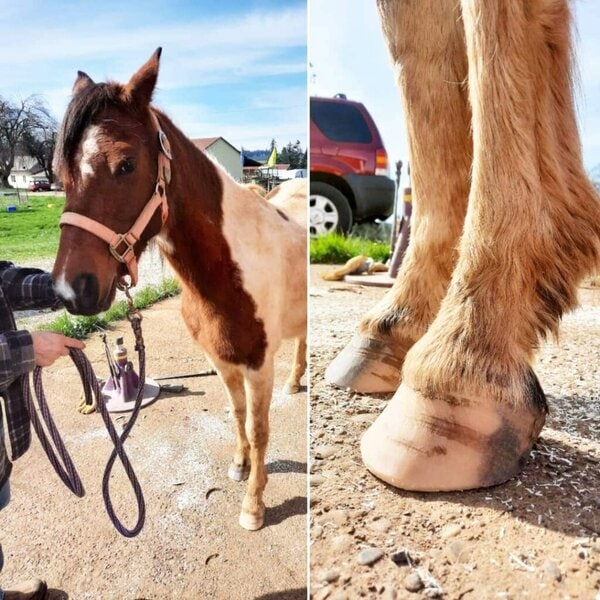
Related Questions
Why Do Horses Need Shoes But Not Cows? Cows don’t need shoes because, unlike horses, they are rarely subjected to vigorous physical activities. Some horses are regularly exposed to a wide variety of surfaces – rough, moist, uneven – and to maintain hoof integrity, it may be necessary to put shoes on such hooves.
How Much Does Shoeing A Horse Cost? Farrier rates vary from state to state, and it may cost you an amount between $60 to $150 to shoe your horse. Ultimately, the amount you’ll spend to shoe a horse depends on factors such as the farrier doing the shoeing, transportation costs, and the amount spent to purchase shoeing equipment, among others.
Does Cleaning A Horse’s Hoof Hurt? Cleaning and picking up a horse’s hoof is a pain-free process. And the reason for this is simple: the outer part of a horse’s hooves doesn’t contain nerve endings – just like the fingernails in humans. You should also teach a horse to lift its legs for cleaning on cue, to avoid getting hurt while picking the hooves.

